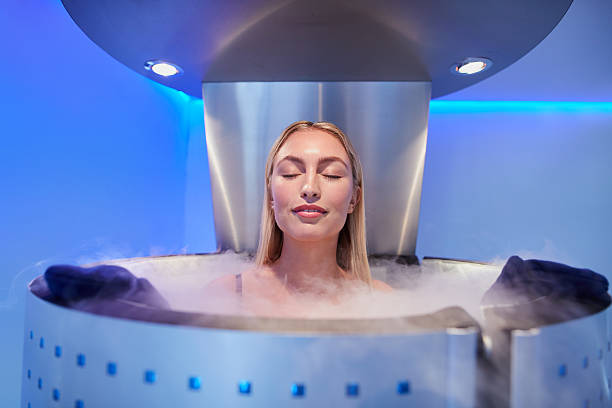Cryotherapy for Skin Rejuvenation: The Cold Revolution
In the ever-evolving world of beauty and skincare, a chilling new treatment is gaining momentum. Cryotherapy, long associated with athletic recovery and pain management, has found its way into the realm of skin rejuvenation. This innovative approach harnesses the power of extreme cold to stimulate collagen production, reduce inflammation, and enhance overall skin health. As more people seek non-invasive alternatives to traditional skincare treatments, cryotherapy has emerged as a promising option that combines science and simplicity. From its origins in ancient healing practices to its modern applications in high-end spas and dermatology clinics, cryotherapy for skin rejuvenation represents a fascinating intersection of wellness and beauty trends.

This process, known as vasoconstriction followed by vasodilation, is believed to have several beneficial effects on the skin. It can help flush out toxins, reduce inflammation, and stimulate the production of collagen and elastin – two essential proteins for maintaining skin elasticity and firmness. Moreover, the cold exposure activates the body’s natural healing processes, potentially leading to improved skin texture and tone.
Evolution of Cryotherapy in Skincare
While the use of cold for therapeutic purposes dates back centuries, modern cryotherapy for skin rejuvenation has its roots in the late 20th century. Initially developed for treating certain skin conditions and removing lesions, the technology has since been refined and adapted for cosmetic purposes.
The first cryotherapy chambers were introduced in Japan in the 1970s, primarily for treating rheumatic diseases. It wasn’t until the 1990s and early 2000s that researchers and dermatologists began exploring the potential of controlled cold exposure for skin rejuvenation. This period saw the development of more precise and targeted cryotherapy devices, allowing for safer and more effective treatments.
Today, cryotherapy for skin rejuvenation encompasses a range of techniques, from whole-body cryotherapy chambers to localized treatments using handheld devices. The field continues to evolve, with ongoing research into optimal temperatures, exposure times, and treatment protocols.
Types of Cryotherapy Skin Treatments
Cryotherapy for skin rejuvenation comes in various forms, each tailored to specific skin concerns and treatment areas. The most common types include:
- Facial Cryotherapy: This targeted treatment involves applying controlled cold to the face using specialized devices. It aims to reduce puffiness, tighten pores, and improve overall skin texture.
- Cryofacials: A more intensive version of facial cryotherapy, cryofacials often combine cold therapy with other skincare treatments like serums or masks for enhanced results.
- Whole-Body Cryotherapy: While primarily used for athletic recovery, whole-body cryotherapy sessions may also have skin benefits, particularly for overall skin tightening and circulation improvement.
- Localized Cryotherapy: This approach uses handheld devices to target specific areas of concern, such as acne-prone zones or areas with fine lines and wrinkles.
- Cryolipolysis: Although primarily used for fat reduction, this technique can also have skin-tightening effects in treated areas.
Benefits and Potential Risks
Proponents of cryotherapy for skin rejuvenation cite numerous potential benefits. These include reduced inflammation, improved skin tone and texture, minimized appearance of pores, and enhanced collagen production. Some users report a noticeable “glow” and tightness immediately after treatment.
However, it’s important to note that while many users report positive results, scientific evidence supporting these claims is still emerging. Some studies have shown promising results, particularly in terms of collagen stimulation and inflammation reduction, but more research is needed to fully understand the long-term effects and optimal treatment protocols.
As with any cosmetic treatment, cryotherapy for skin rejuvenation is not without risks. Potential side effects can include temporary redness, numbness, or tingling in treated areas. In rare cases, more serious complications like frostbite or hyperpigmentation may occur, especially if the treatment is not performed correctly.
Integration into Beauty Routines
As cryotherapy gains popularity in the skincare world, it’s being integrated into beauty routines in various ways. Some high-end spas and dermatology clinics offer professional cryotherapy treatments as standalone services or as part of comprehensive skincare packages. These treatments often combine cryotherapy with other modalities like LED light therapy or microcurrent stimulation for enhanced results.
At home, beauty enthusiasts are experimenting with DIY cryotherapy techniques. This can range from simple ice facials to more sophisticated at-home cryotherapy devices. Some skincare brands have even developed cryotherapy-inspired products, such as cooling face masks or cryogenic serums, designed to mimic the effects of professional treatments.
The Future of Cryotherapy in Skincare
As research continues and technology advances, the future of cryotherapy in skincare looks promising. We’re likely to see more targeted and personalized treatments, with devices capable of adjusting temperature and exposure time based on individual skin types and concerns.
There’s also growing interest in combining cryotherapy with other skincare technologies for synergistic effects. For example, some researchers are exploring the potential of alternating cold and heat therapies to maximize skin rejuvenation benefits.
Moreover, as sustainability becomes increasingly important in the beauty industry, we may see the development of more eco-friendly cryotherapy devices and treatments. This could include systems that use less energy or alternative cooling methods that have a lower environmental impact.
In conclusion, cryotherapy for skin rejuvenation represents an exciting frontier in the beauty and wellness industry. While more research is needed to fully understand its long-term effects and optimal use, its growing popularity and promising initial results suggest that this chilly treatment may have a warm future in skincare. As with any new beauty trend, it’s essential for consumers to approach cryotherapy with informed caution, consulting with skincare professionals to determine if it’s right for their individual needs and concerns.





